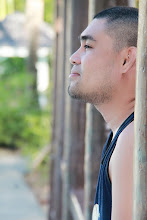MANILA, Philippines - A monster 21-foot (6.4-meter) saltwater crocodile, believed to be the biggest ever captured, has been trapped in the southern Philippines after a spate of fatal attacks, officials said Tuesday.
The 1,075-kilogram (2,370-pound) male is suspected of eating a farmer who went missing in July in the town of Bunawan, Agusan del sur Province and of killing a 12-year-old girl whose head was bitten off two years ago, crocodile hunter Rollie Sumiller said.
The hunter examined the crocodile's stomach contents by forcing it to vomit after it was captured Saturday, but there was no trace of human remains or of several water buffaloes also reported missing by locals.
"The community was relieved," Sumiller said of the capture, but added: "We're not really sure if this is the man-eater, because there have been other sightings of other crocodiles in the area."
The local government of the impoverished town of 30,000 people has decided against putting down the reptile, and will instead build a nature park where it will go on display.
Josefina de Leon, wildlife division chief at the Philippines environment ministry, said the beast was likely the biggest crocodile ever captured anywhere in the world.
"Based on existing records the largest that had been captured previously was 5.48 metres long," she told AFP.
The Philippine specimen would easily dwarf the largest captive saltwater crocodile, which the Guinness World Records website lists as Cassius, a 5.48-meter (18-foot) male which lives at an Australian nature park.
Press reports also describe other huge crocs including a 6.2-meter (20.3-foot) adult male killed in Papua New Guinea in 1982 that was measured after it was skinned.
The Bunawan hunting team, employed by a government-run crocodile breeding farm, began laying bait using chicken, pork and dog meat on August 15 in an attempt to snare the beast.
But the reptile, which measured 3 feet (0.91 meters) across its back, simply bit off both the meat and the line it was skewered on.
A heavy metal cable finally proved beyond the power of its jaws, and the beast was subdued in a creek late Saturday with the help of about 30 local men.
It was the team's second attempt after a failed expedition launched in response to the fatal 2009 attack.
Beyond the mark of the hook inside its upper jaw, the crocodile did not appear to have sustained any serious injuries, Sumiller said.
Bunawan Mayor Edwin Cox Elorde said the government would build a nature park showcasing the giant crocodile and other species found in the vast marshland on the upper reaches of the massive Agusan river basin on Mindanao island.
"It will be the biggest star of the park," Elorde told reporters.
Sumiller said the plan was the best option available for the creature.
"He's a problem crocodile that needs to be taken from the wild... and used for eco-tourism," he said.
Crocodylus porosus, or the estuarine crocodile, is the world's largest reptile. It grows to 5 or 6 meters in length and can live up to 100 years.
While not considered an endangered species globally, it is "critically endangered" in the Philippines, where it is hunted for its hide which is used in the fashion industry, de Leon said.
"There have been very few sightings of porosus in the wild in the Philippines in recent years," she added.
In July, a saltwater crocodile measuring almost 14 feet (4.2 meters) was caught on the western Philippine island of Palawan after it killed a man.










0 comments:
Post a Comment